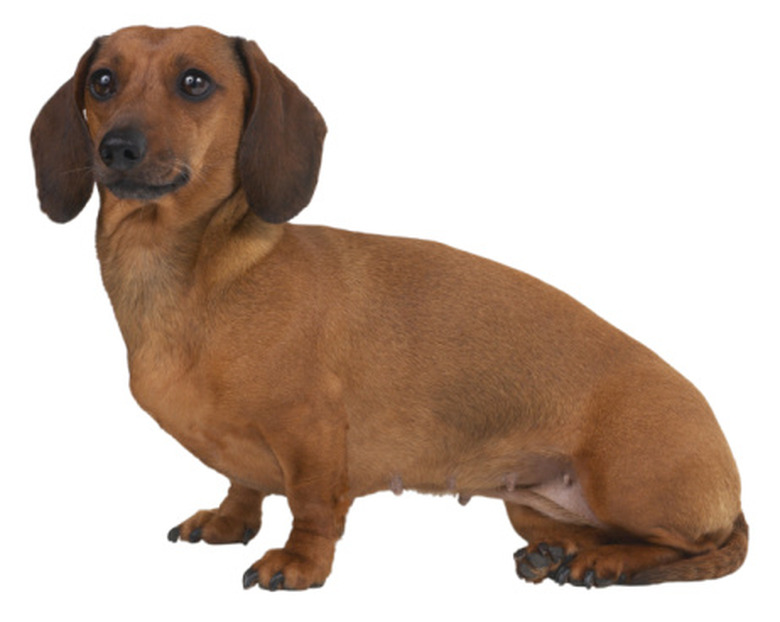How To Drain A Dachshund's Anal Sacs
Things Needed
-
Disposable rubber gloves
-
Absorbent paper towels
-
Warm water
Tip
Drain the anal sacs during your dachshund's regular bath time. That's the most convenient time to do it and you can shampoo the area afterwards.
While no dog owner relishes the idea of expressing the liquid from a dog's anal sacs, dachshunds are more prone than some other breeds to anal sac problems. If you've noticed your dog dragging his hind end across the lawn or the carpeting, he may have overfull anal sacs. While a groomer or a vet can easily drain them, you can do the same thing yourself. After the first time, you'll find it's not difficult and can offer your dachshund some much-needed relief.
Step 1
Elevate your dachshund on a grooming table or on another small platform to encourage her to stand still while you're draining her anal sacs. If your dog resists standing still, recruit an assistant to keep her occupied by holding her head gently while talking reassuringly.
Step 2
Lift your dachshund's tail with one hand and, with your other hand, feel gently for his anal sacs. These two small glands are located approximately a half-inch away from the anus on either side, just below horizontal. If you were to compare your dog's rear end to a clock, with the anus directly in the middle, the anal sacs would be positioned at 4 o'clock and 7 o'clock.
Step 3
Locate the small glands and place a gloved finger on the outer edge near the bottom. With your other hand, hold an absorbent paper towel over the anus.
Step 4
Press gently but firmly on the outside edge of the anal sac and move your finger in a straight line toward the anus. The drainage tube that connects the gland to the anus runs in a direct line.
Step 5
Wipe away the anal sac discharge with the paper towel and repeat the procedure on the other side. A dachshund should have its anal sacs drained at least once every two months to reduce the risk of developing impaction, which can be painful for the dog.
Step 6
Wash the anus area with warm water and pat dry when you're done.
Always check with your veterinarian before changing your pet's diet, medication, or physical activity routines. This information is not a substitute for a vet's opinion.
